-
Car Reviews
- All reviews
- Midsize SUVs
- Small cars
- Utes
- Small SUVs
- Large SUVs
- Large cars
- Sports SUVs
- Sports cars
- Vans
Latest reviews
- Car News
-
Car Comparisons
Latest comparisons
- Chasing Deals
As the third model in Kia’s blossoming EV line-up, the EV5 midsize SUV tempts buyers with excellent packaging, great cabin design and sexy price
Expecting Kia’s all-new EV5 electric midsize SUV to be a condensed carbon copy of its rather brilliant EV9 sibling is perhaps a little unfair, though not without logic. The EV9 has proved such a game-changer for large electric SUVs, and such a breakthrough model for Kia, that any trickle-down effect must surely be desirable.
After all, the EV5 nameplate positions this new mid-sizer right alongside the dynamically excellent EV6 crossover-SUV, and the EV5’s wagon-shaped form clearly takes its inspiration from the commanding EV9.
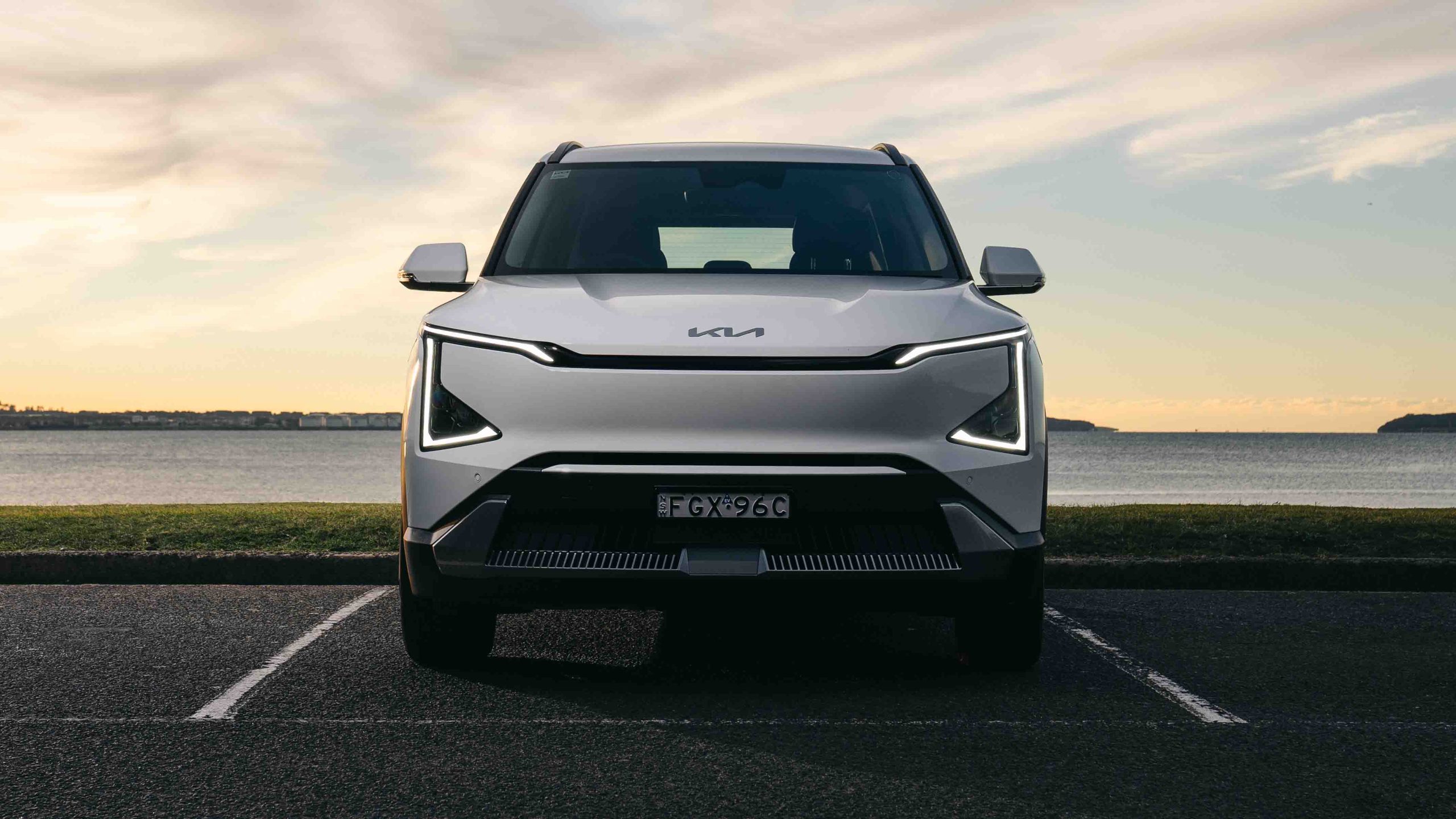
Yet the EV5 is a distinctly different SUV. Riding on a front-drive-biased platform development of Hyundai-Kia’s E-GMP electric architecture (called N3 eK), the EV5 foregoes the rear-drive purity of the EV6/EV9 for a set-up that favours packaging over dynamics, and cost-consciousness over cutting-edge EV technology.
While that brings an incredibly comfortable, roomy and elegant interior – even on the entry-level Air – as well as a persuasive $56,770 driveaway starting price, the EV5 isn’t a driver’s car cloaked in an SUV body style.
Its 400-volt electric architecture means the large-battery EV5 Long Range can only handle 140kW DC charging and takes 38 minutes to go from 10-80 percent using the fastest charger possible. That’s competitive with the popular BYD Atto 3 (37 minutes) but way below the benchmark 18 minutes it takes for an EV6 or EV9.
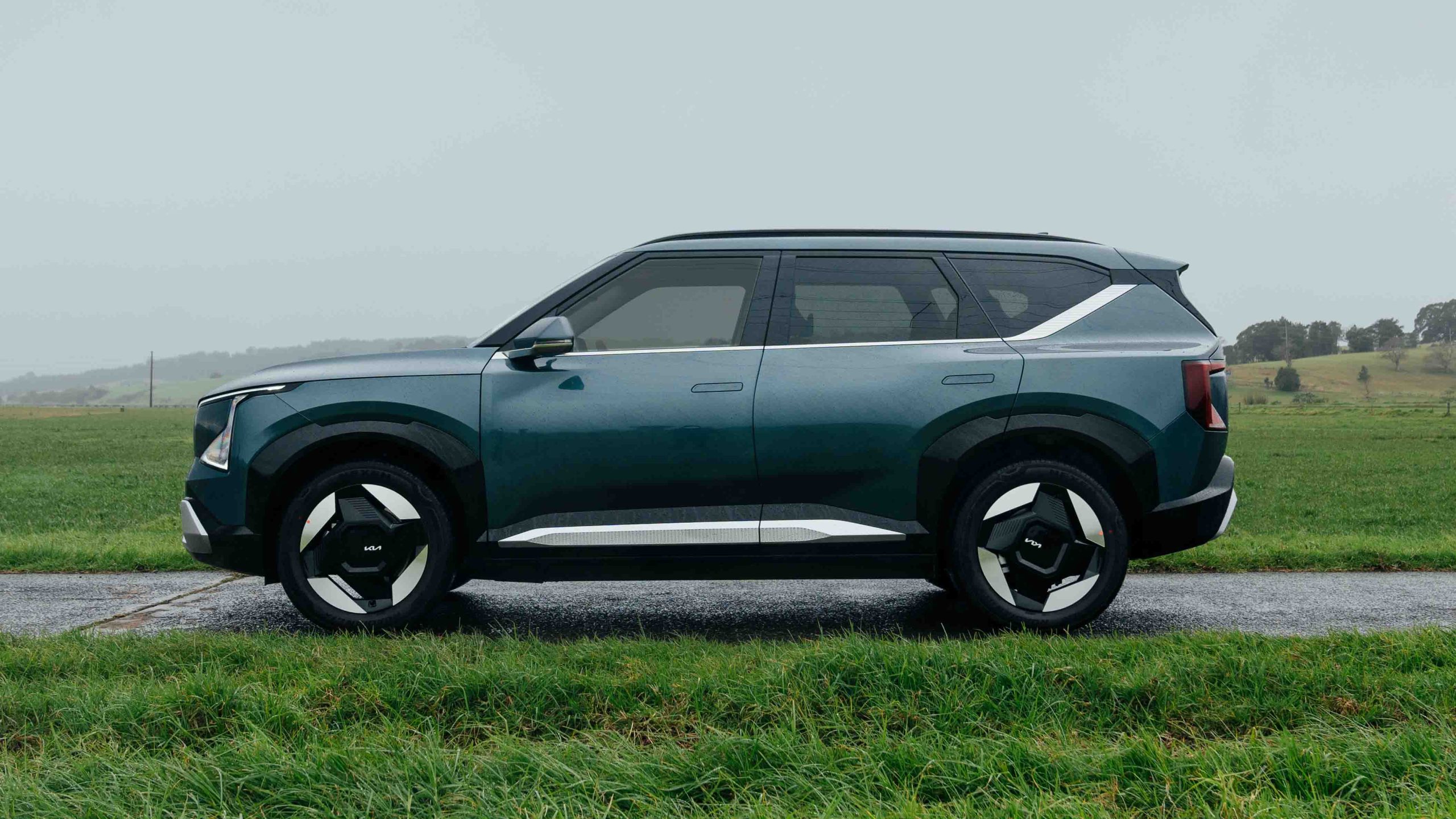
The best way to view the new EV5 is as Kia’s value-focused weapon against the onslaught of electric SUVs from China. And given that this is the first vehicle to be exported from Kia’s Chinese production facility in Yancheng, EV5’s positioning couldn’t be more appropriate.
Chinese sourcing gives Kia Australia improved access to production volume should demand exceed the expected 400 units a month, as well as the cost-competitiveness to really make an impact.
The EV5 line-up consists of four models – the front-drive Air Standard Range ($56,770 driveaway), front-drive Air Long Range ($63,990 driveaway), AWD Earth Long Range ($68,990 driveaway) and forthcoming AWD GT-Line Long Range ($75,990 driveaway), which arrives in December.
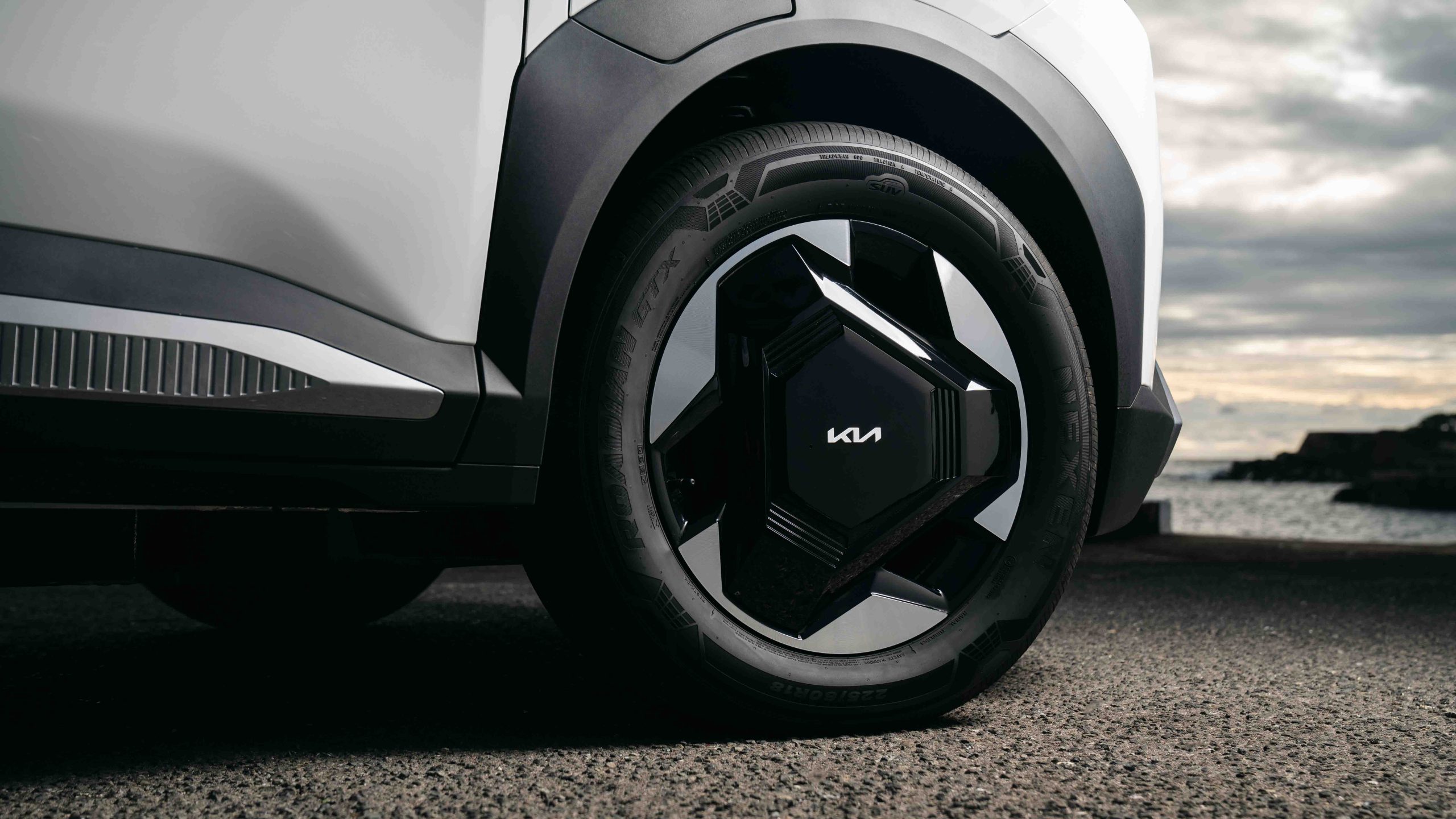
The entry-level Air gets a 160kW/310Nm single-motor powertrain, with a 64.2kWh battery giving the base variant 400km WLTP range and a larger 88.1kWh battery giving the Long Range a boost to 555km.
Riding on nicely chubby Nexen 225/60R18 tyres, both Air models offer the most absorbent ride quality of any EV5, and in our launch-drive testing, each managed to get impressively close to Kia’s range claims – around 373km from the Standard Range, and 512km from the Long Range.
The EV5 Air makes sense in a bunch of other ways too. While it lacks the accelerative punch of the dual-motor variants, 0-100km/h in 8.5sec (SR) or 8.9sec (LR) is broadly equivalent to single-motor EV9s.
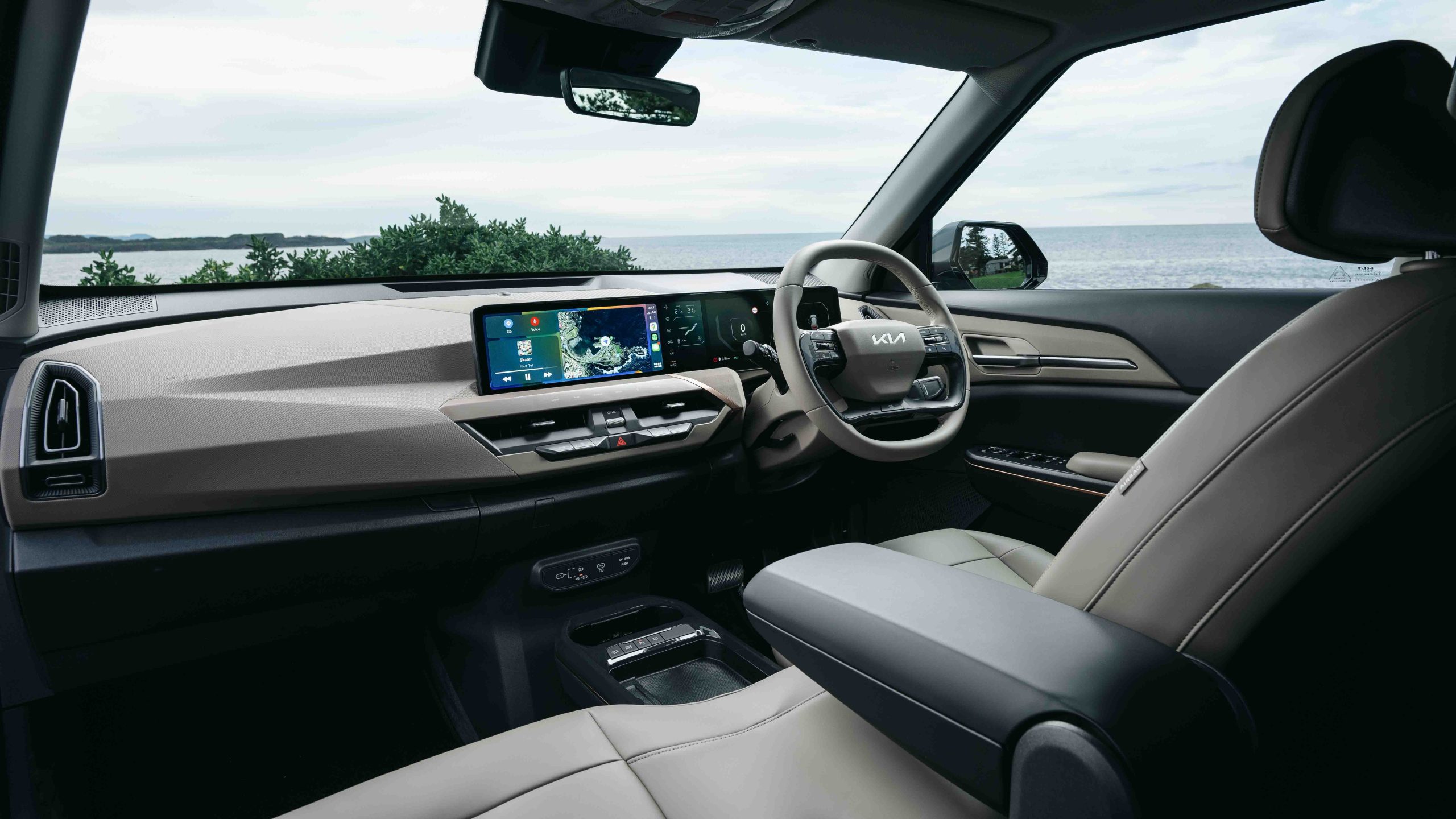
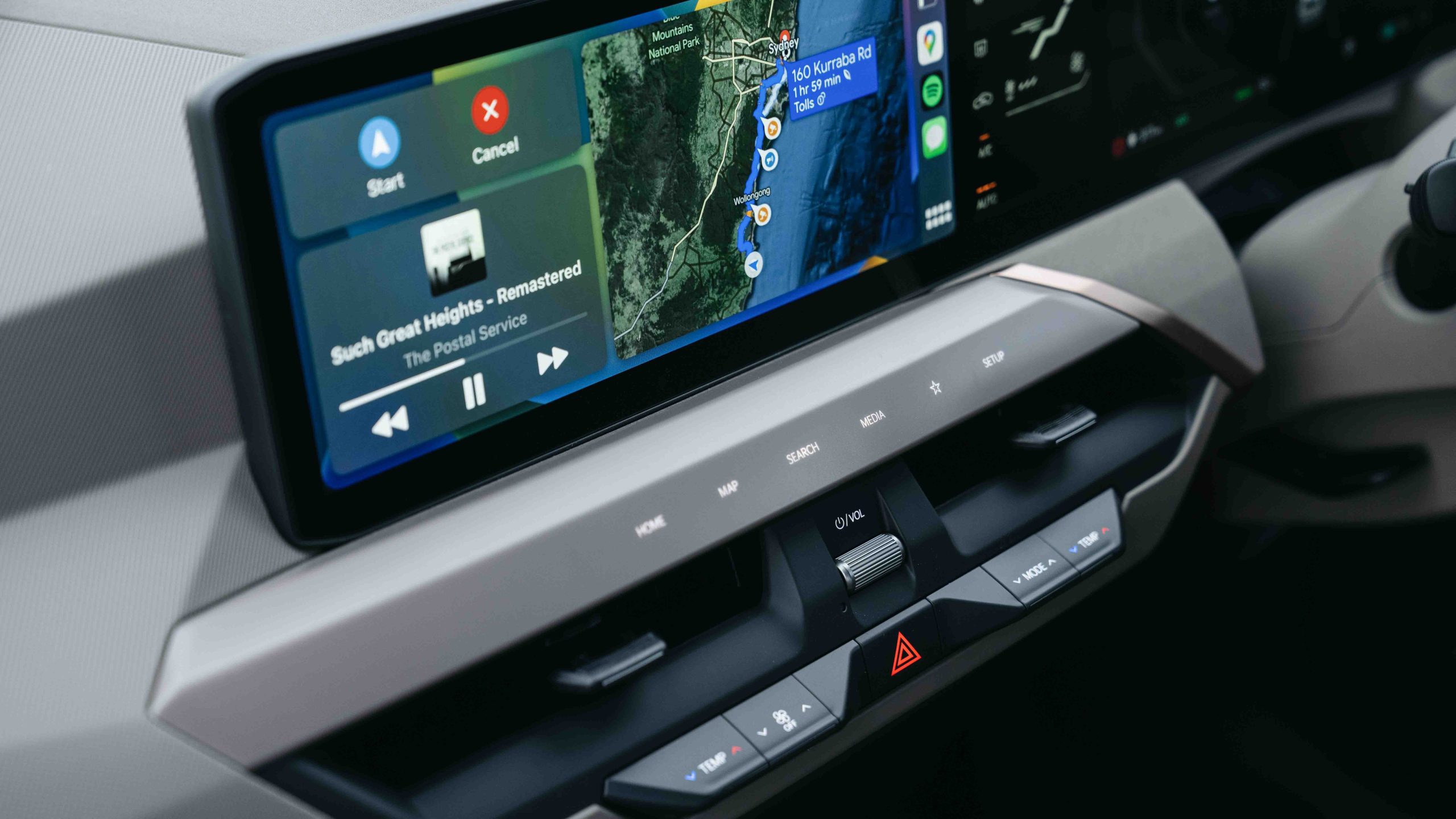
It’s also about as much stonk as the EV5’s front tyres are comfortably capable of handling, though the Air’s swiftly silken performance is also combined with impressively finessed calibration of its electronic driving systems such as accelerator tuning and adaptive cruise control – giving it a clear advantage over many of its similarly priced competitors.
Inside, the EV5 Air could easily pass for a more expensive variant. The consistently smooth finish of its interior surfaces combines with an intriguing asymmetric treatment for its dashboard texturing and classy upholstery to compensate for the sins of the poverty-pack EV6 Air.
In this instance, the EV5 Air’s supple recycled-PET artificial leather with cloth-covered edging underneath your thighs is really pleasant.
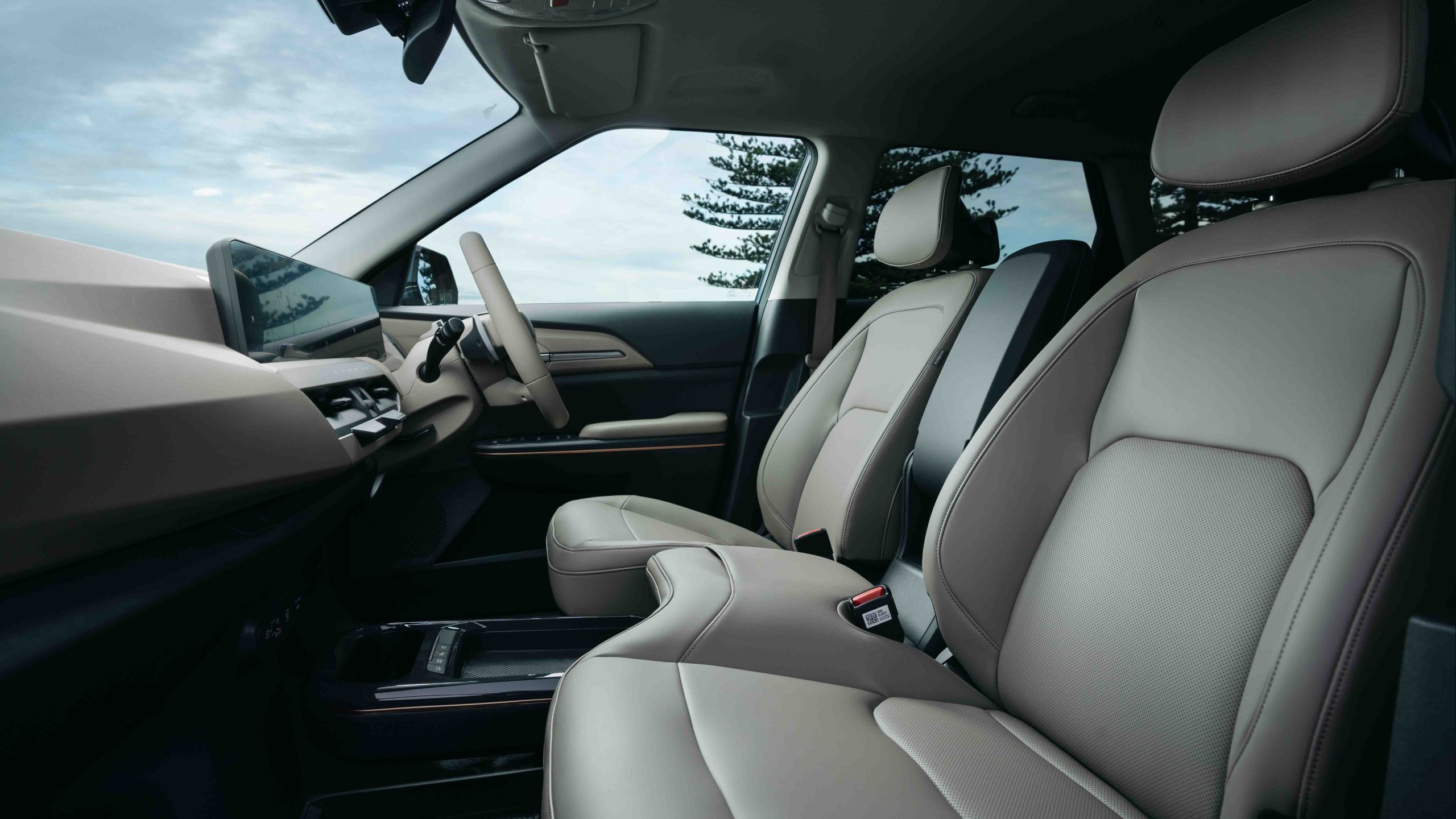
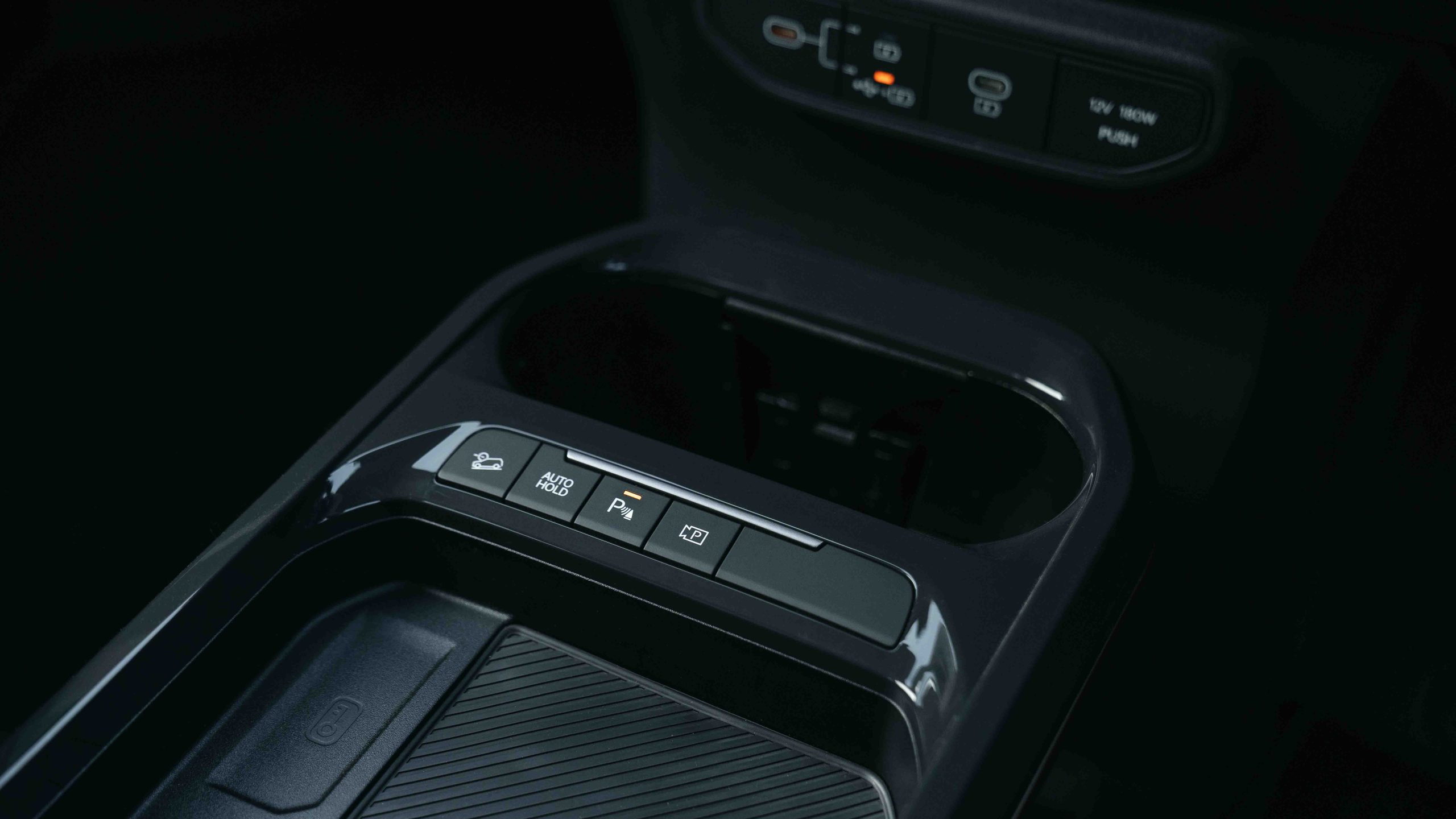
Seat comfort is superb in all four outer positions – capitalising on what must be close to best-in-class cabin space, as well as vision – with the centre rear seat doable for smaller humans, and the centre front offering a padded lump (with inbuilt pocket) for holding your partner’s hand or perhaps resting a pet (while charging).
The rear seat also folds in one double movement (base and backrest together) to deliver a fully flat load area – expanding the already generous 513-litre boot – which is so flat, Kia even offers an inflatable mattress to cover the whole area.
There are removable sections in the rear floor to expand the depth when carrying taller plants, says Kia, as well as other spillable items. And there’s a fully sealed 67-litre frunk which is accessible Porsche-style by pressing a button on the keyfob.
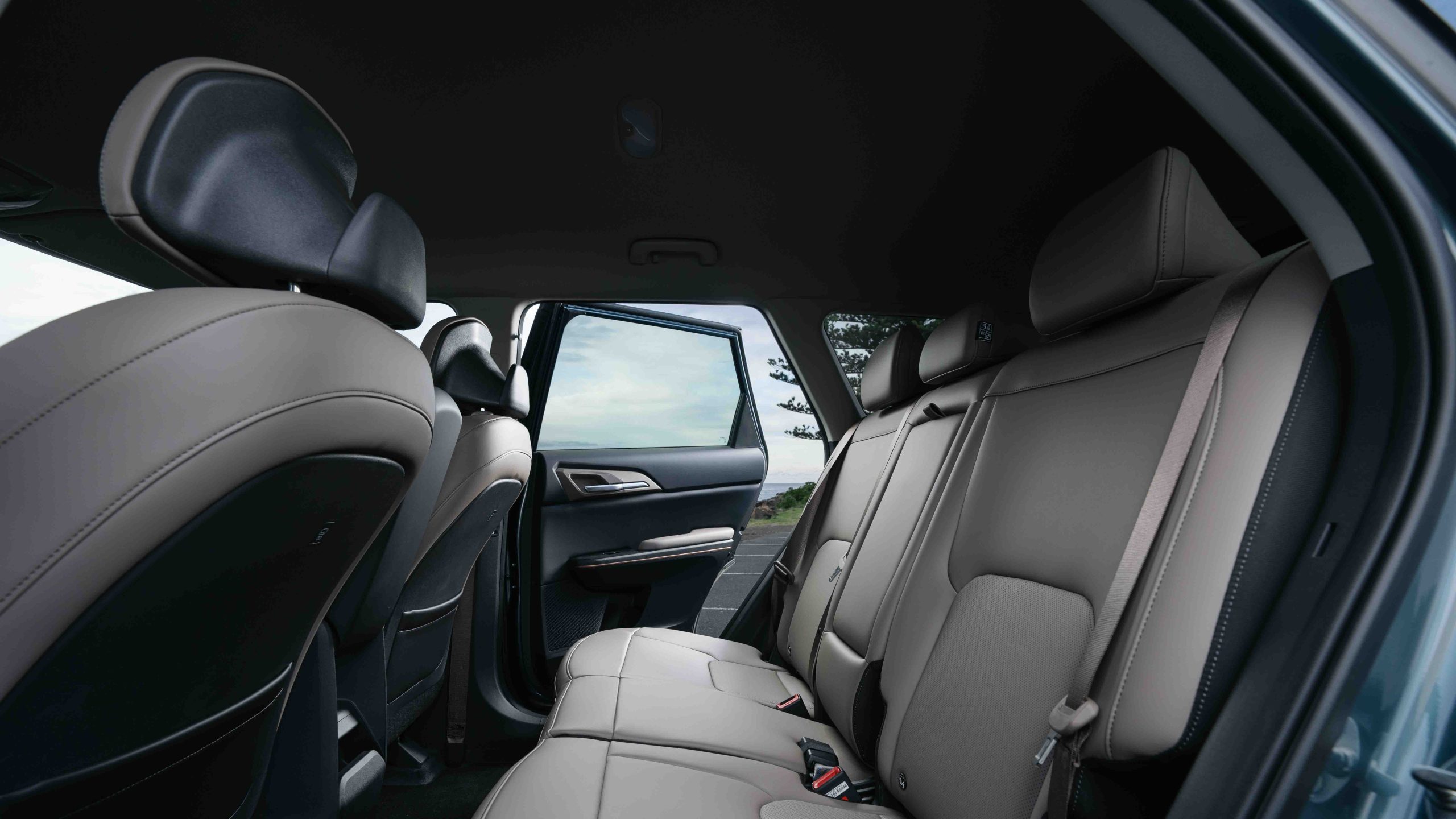
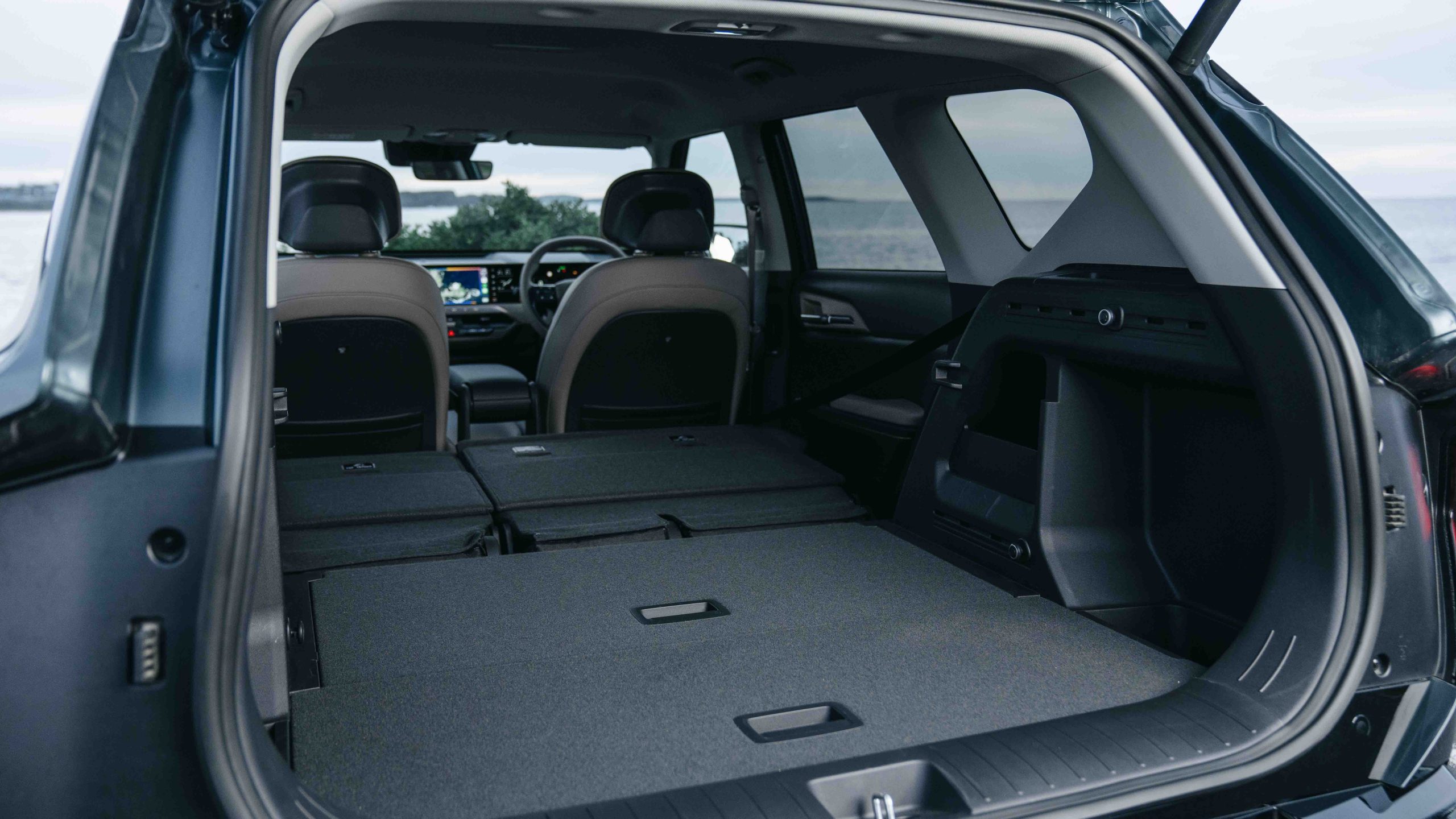
Equipment wise, the Earth’s $5K premium over an Air Long Range is mostly accounted for by its dual-motor AWD set-up with increased outputs (230kW/480Nm, though with more than 65 percent of that biased towards the front), improved performance (0-100km/h in 6.1sec) and a modest expansion in luxuries.
That includes 19-inch alloys with 235/55R19 Kumho tyres, gloss-black wheel arches, bumper and skid-plate garnishing, gloss-black roof rails, rear privacy glass, full artificial-leather seats with perforated inserts (and Nougat Beige two-tone availability), an electric tailgate, electric rear child locks and V2L exterior capability.
Both Air and Earth share huge centre-tunnel storage trays, as well as wireless Apple CarPlay/Android Auto, an electric driver’s seat with four-way lumbar and massage, heated front seats, two 12.3-inch screens with a 5.0-inch HVAC screen, respectably strong six-speaker audio, Kia Connect with over-the-air updates, and keyless entry/start.
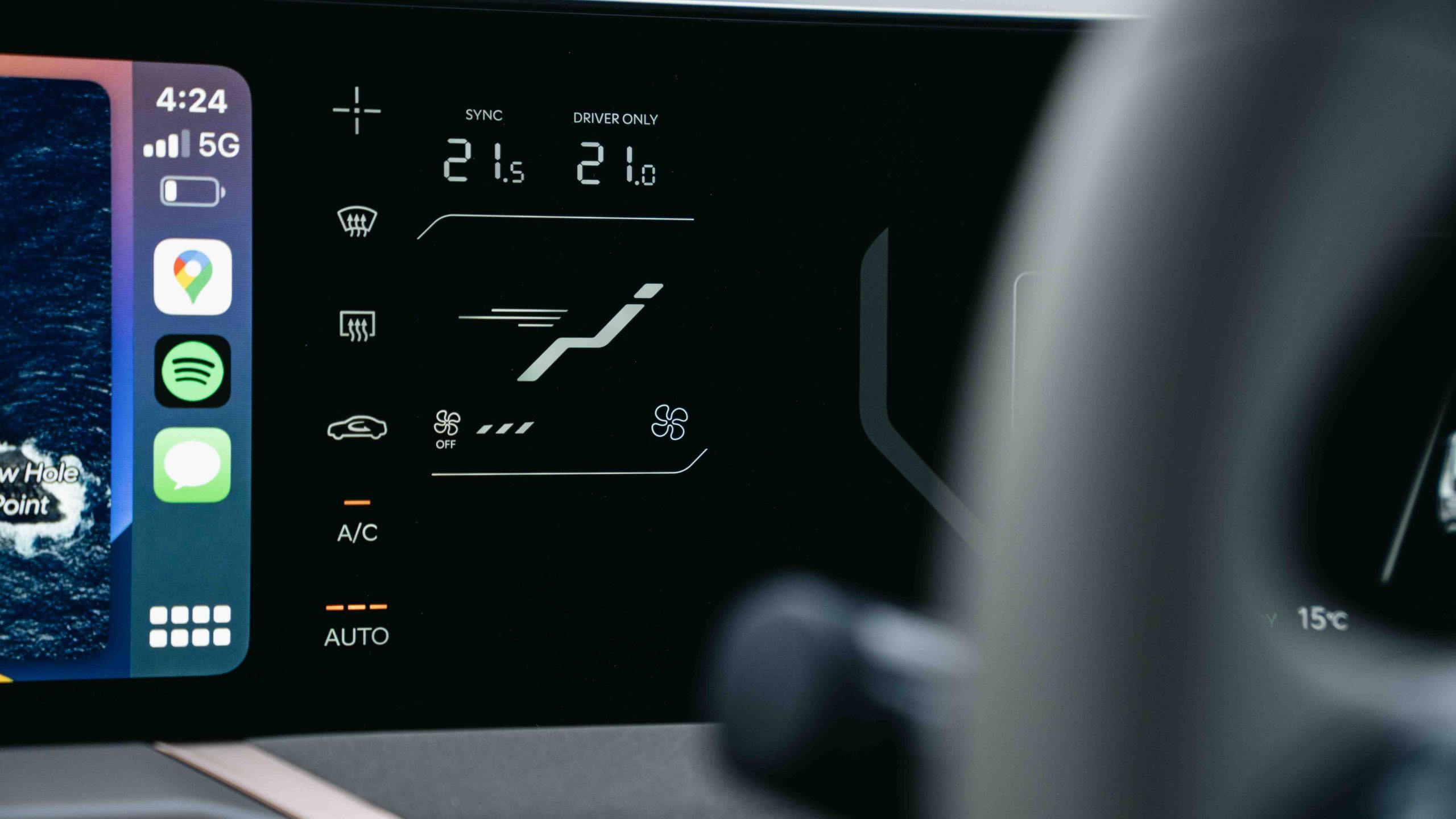
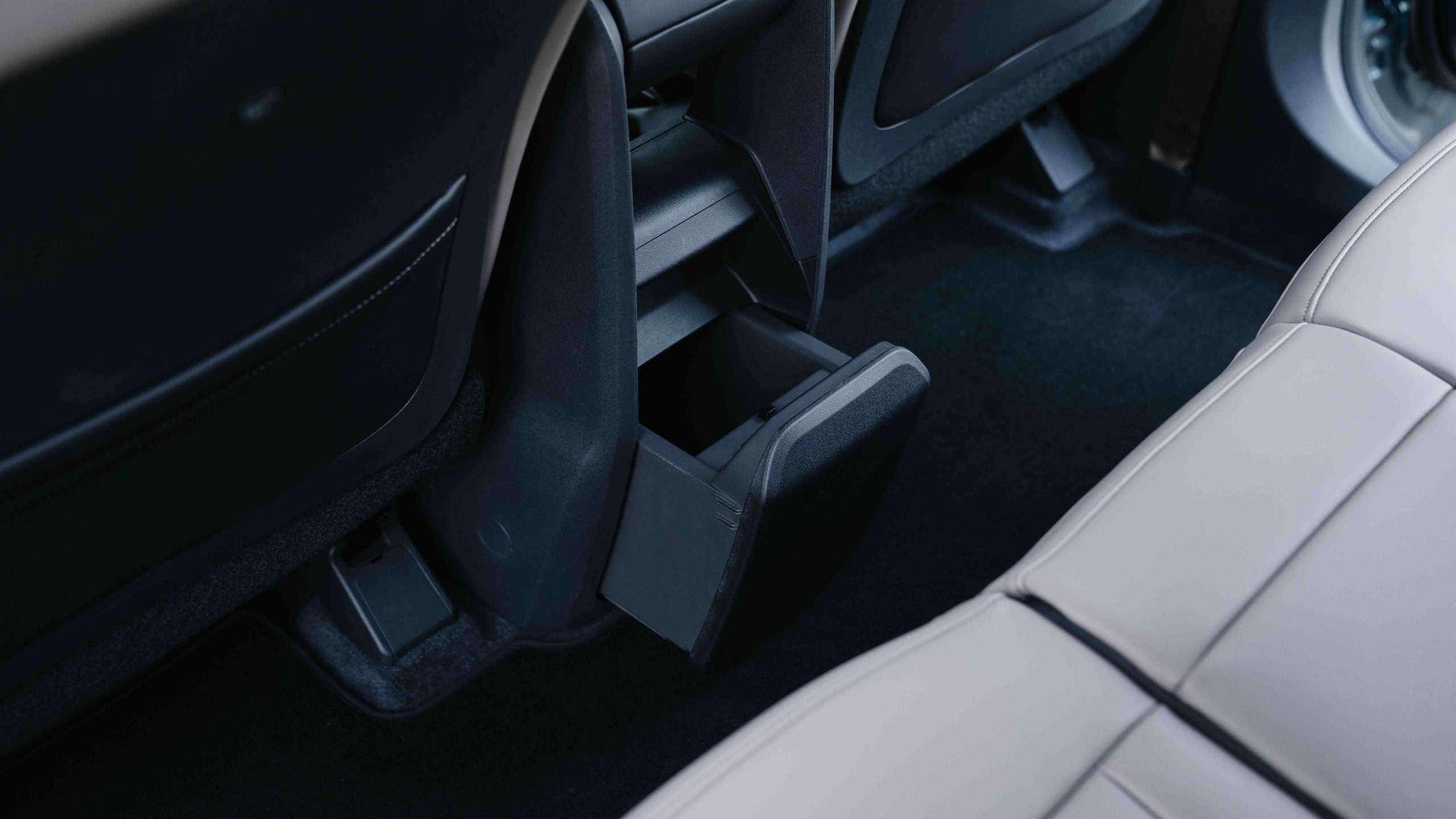
There’s also a tonne of active-safety equipment (though the easily disengaged lane-keep assist remains dim-witted and over-zealous). But the EV5 suffers from sub-standard 600ml bottle storage in all doors and the Air/Earth only get auto up/down windows for the front doors.
The forthcoming GT-Line adds a hugely persuasive amount of extra kit for its $7K premium over an Earth AWD.
This includes 20s with 255/45R20 tyres, unique colour-coded bumpers and mouldings, sequential blinkers, a panoramic sunroof, a heated three-spoke sports wheel, two-tone black/white interior trim, ventilated front seats, heated outboard rear seats, ‘relaxation’ driver’s seat with memory and extra massage functions, and an electric front passenger’s seat.
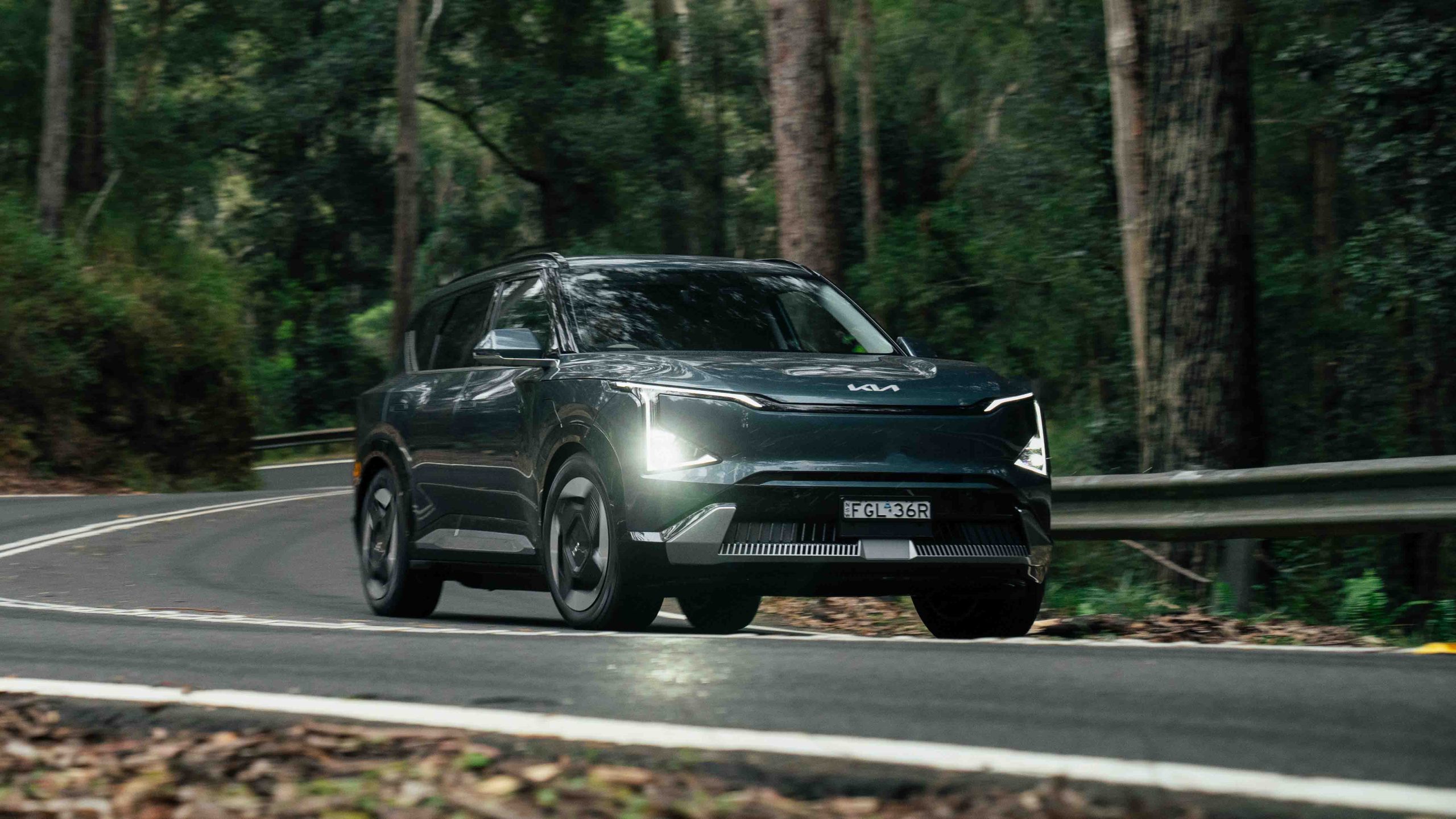
More? It also adds eight-speaker Harman Kardon audio, wireless phone charging, augmented-reality HUD, fingerprint recognition, a rear-seat backrest table, a heated/refrigerated console drawer, and boot luggage board, remote park assist, blind-spot view monitor, surround-view monitor, and front/side/rear parking collision avoidance assist.
The GT-Line’s wider tyres may suit the performance of the AWD powertrain better, seeing that the Earth AWD on 19s doesn’t always have the grip you expect it to.
In corners, it feels pleasantly neutral when set-up properly, and arguably grippier than the front-drive EV5, yet it will also wash the front end wide – say, exiting roundabouts – if you ask for too much power too early. In this respect, the EV5 always feels front-drive, and lacks the encouraging involvement of its EV6 and EV9 siblings.
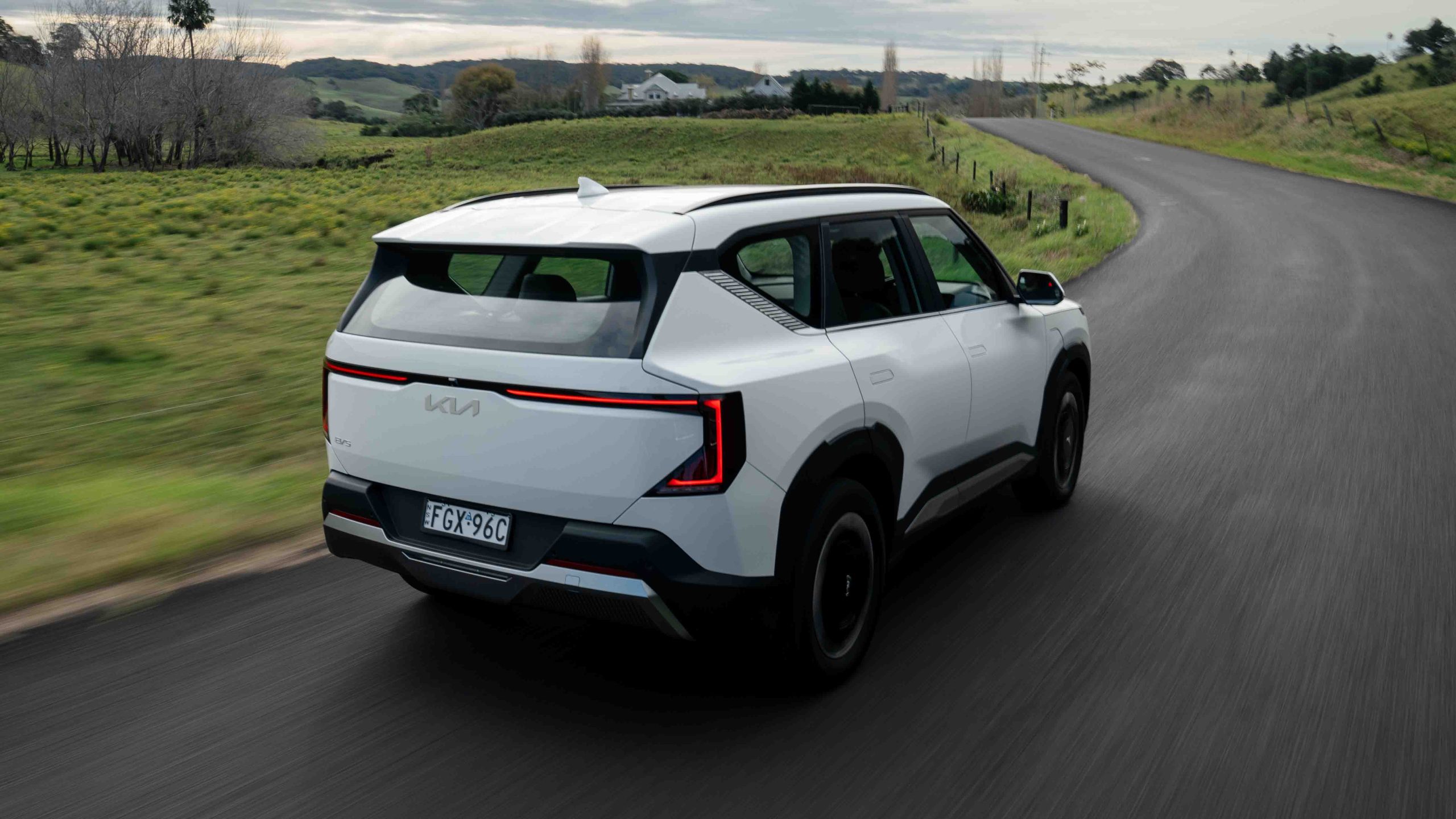
While Kia’s Australian engineering team has comprehensively made over the chassis to provide the best combination of ride, handling and feel, the EV5 much prefers a more measured driving approach than testing its limits – again, unlike the EV6 and EV9.
Its steering is progressive, consistently weighted, and well-judged in Sport for tight roads, yet it lacks the immediacy of a Tesla Model Y’s change-of-direction keenness because that would only exacerbate body movement.
Through faster bumpy corners, the Earth AWD rocks around and lacks the absorbency you’d expect from a comfort-tuned EV.
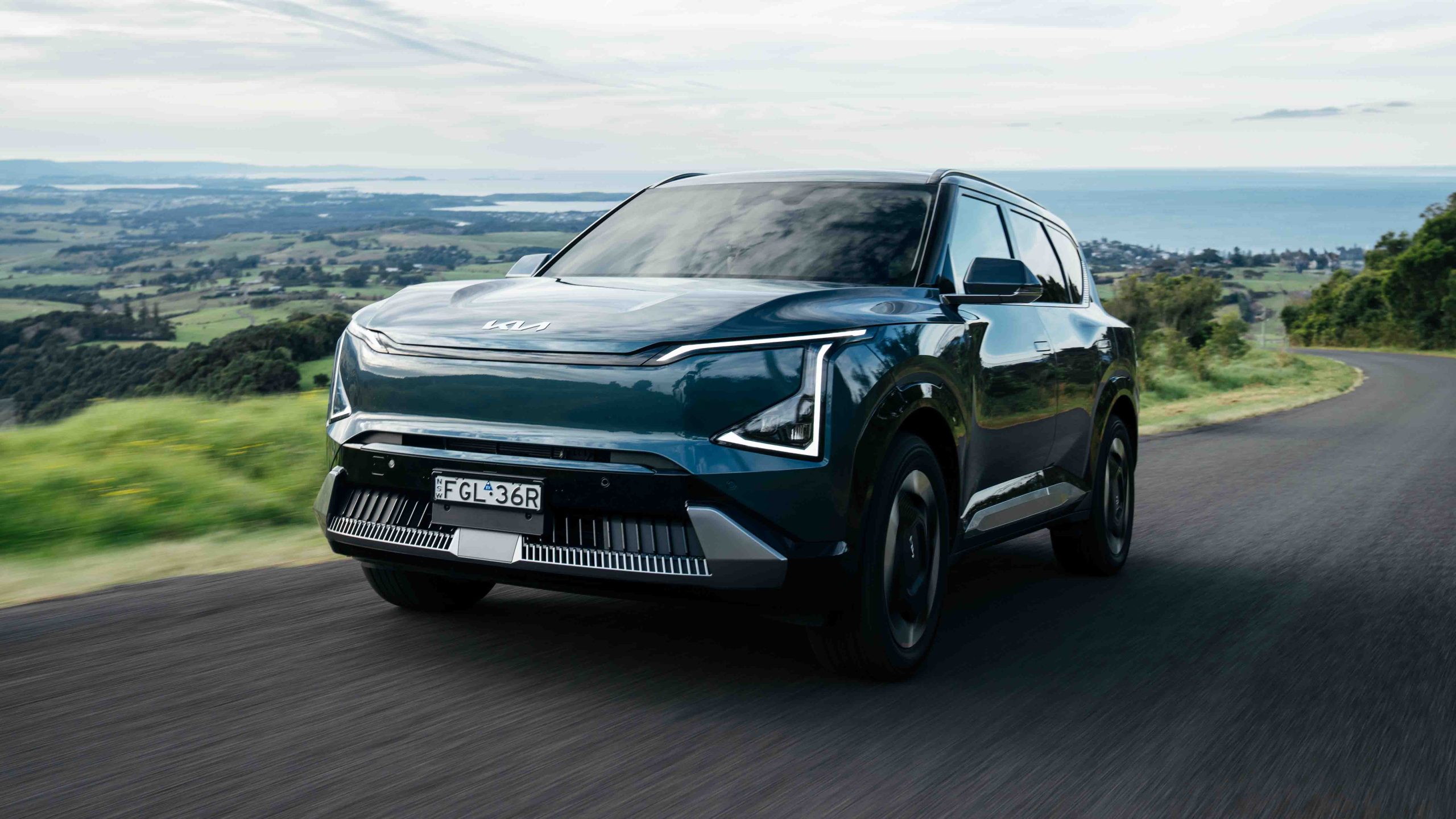
Yet this body movement also surfaces when driving it quickly with the regenerative braking set to the strongest ‘i-Pedal’ mode – again exacerbating the EV5’s sense of height and the lesser ability of its 19s to smooth surfaces.
There’s a decent slab of batteries embedded in its floor, yet you don’t come away from the 2198kg Earth AWD revelling in its low centre-of-gravity. Or its level of driver reward. It does what it needs to do with finessed consistency, and little more.
We also managed impressive energy consumption and range from the Earth AWD – 20.2kWh/100km over 218 kilometres of enthusiastic testing at its Australian launch program, which calculates to 436km of real-world range compared to a WLTP rating of 500km.
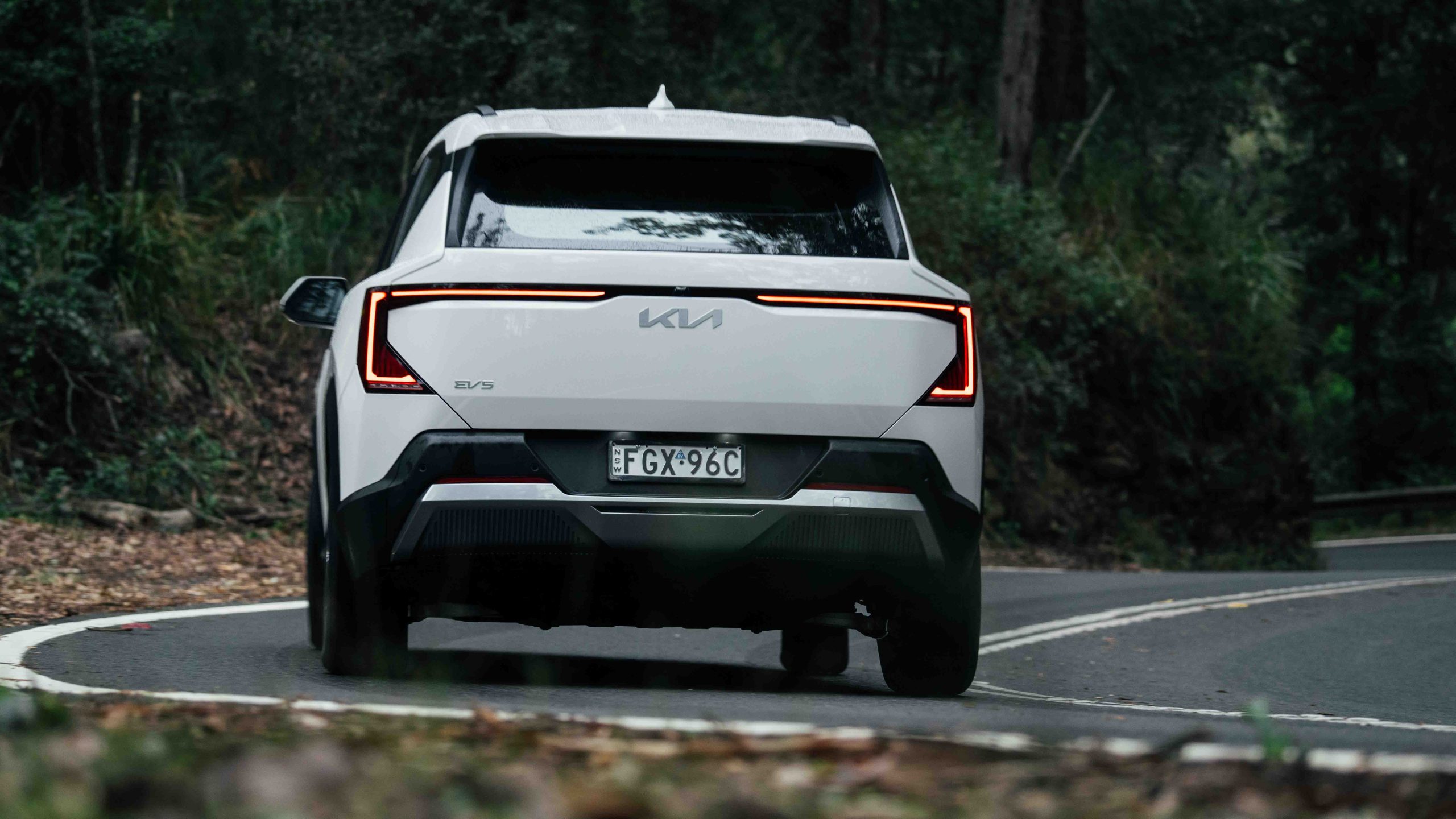
In an everyday environment with a lot more urban driving, there’s every reason to believe Kia’s quoted figures (which includes 470km WLTP for the imminent GT-Line AWD).
For some, the EV5 might be something of a surprise, or perhaps even a bit of disappointment.
The way its quality of finish, design sophistication, packaging cleverness, standard equipment, calibration finesse, and the Air Long Range’s 555km distance potential transcend the EV5’s price positioning is superb – this is a really classy electric SUV for the money.
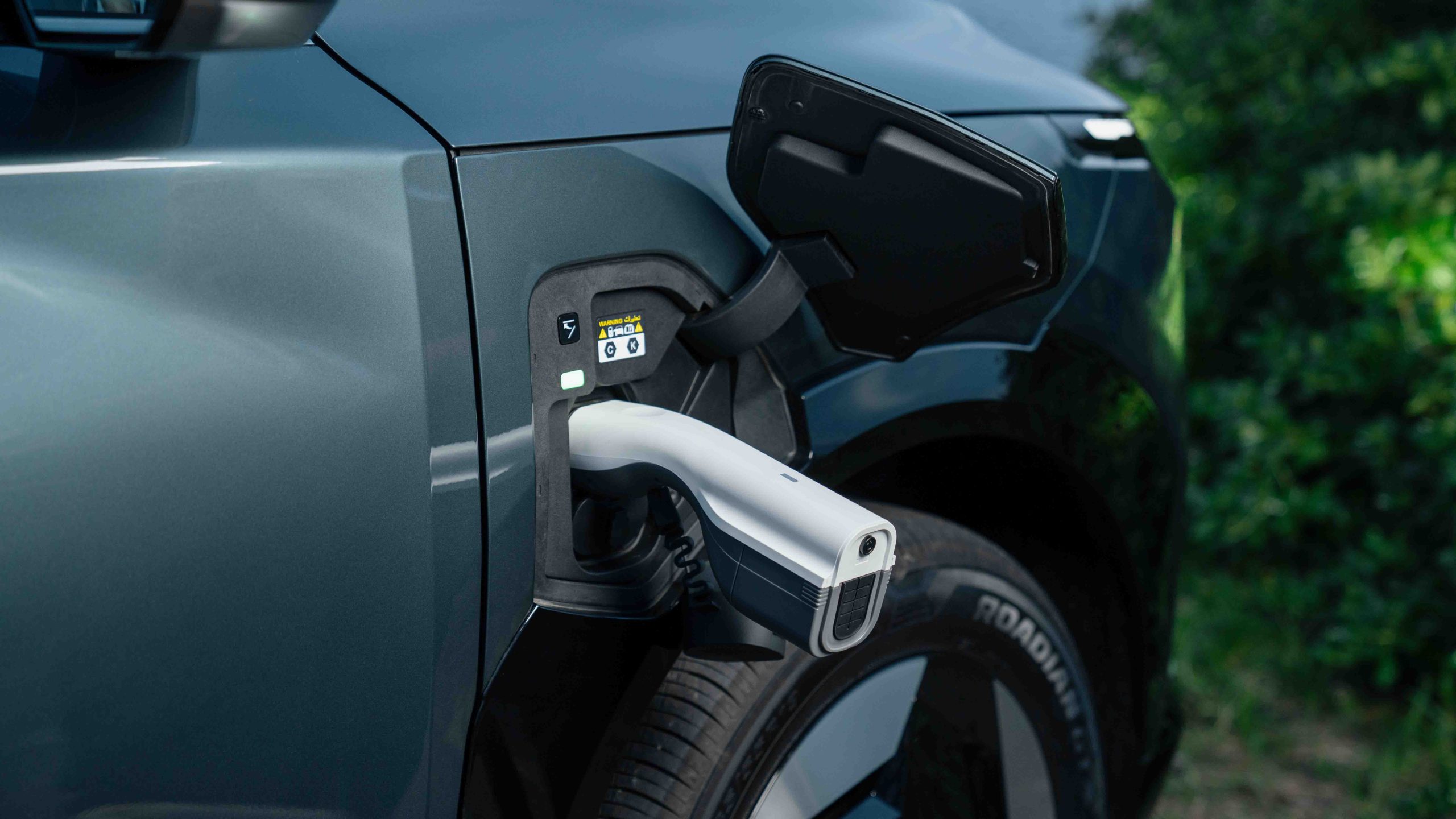
But it is not an EV9 in a concentrate, which, given the huge disparity in price (the EV9 starts at $97,000 before on-road costs and stretches to over $120K), shouldn’t be surprising.
Because the EV5 lacks dynamic engagement, it fails to engender the highs that have consistently elevated the EV6’s all-round driving excellence and the EV9’s wonderful grandeur and majesty.
The newcomer’s two EV stablemates are very much out and proud in their abilities, whereas the EV5 is quite demure – subtly infusing what it does best in an impressively pragmatic fashion.
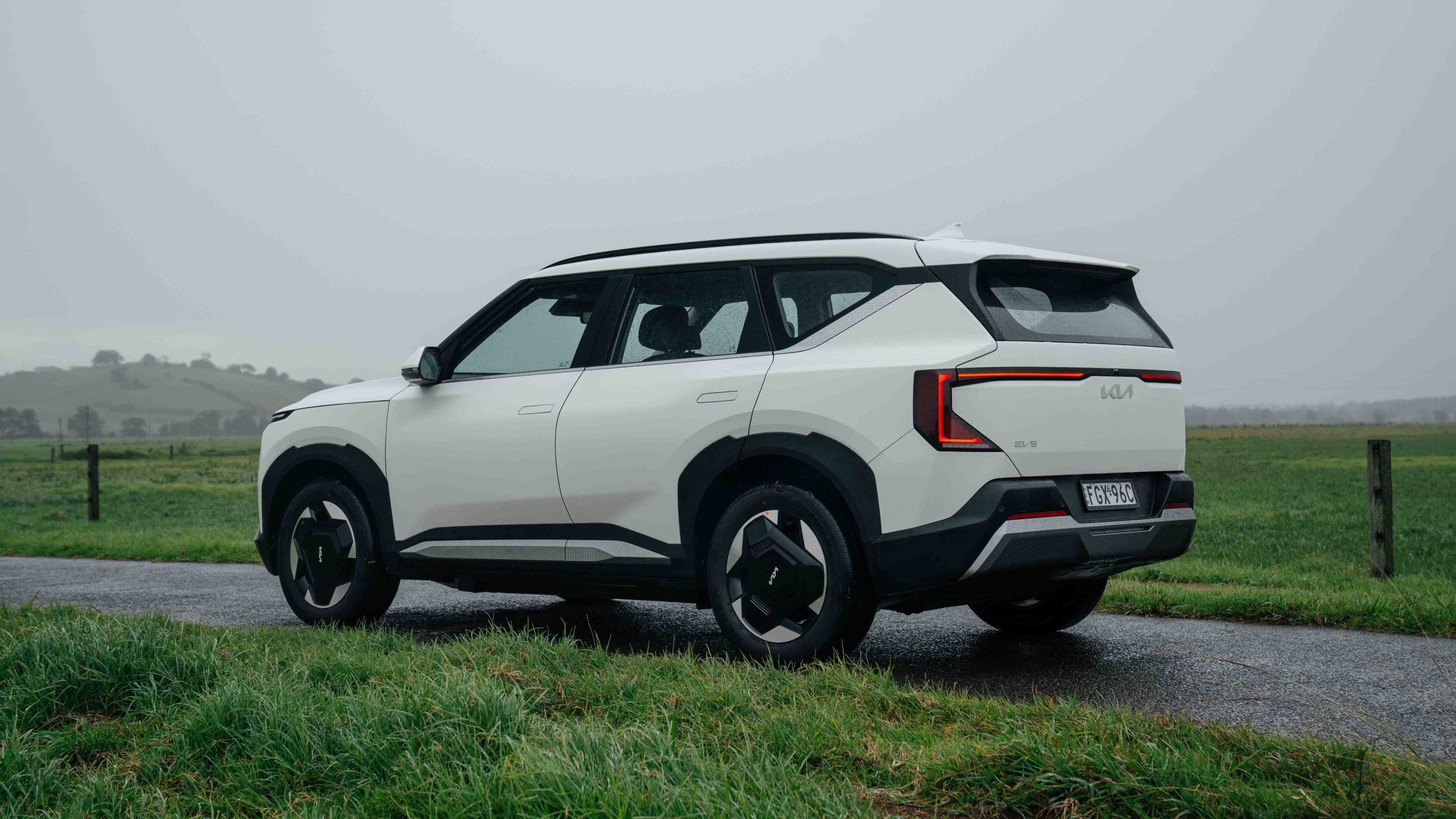
Compared to its more expensive siblings, the EV5 is clearly not as great to drive, or as fast to charge.
But compared to its direct competition, there’s a lot to like about this classy and roomy new Kia EV.
Key specs (as tested)
About Chasing cars
Chasing Cars reviews are 100% independent.
Because we are powered by Budget Direct Insurance, we don’t receive advertising or sales revenue from car manufacturers.
We’re truly independent – giving you Australia’s best car reviews.
The estimate provided does not take into account your personal circumstances but is intended to give a general indication of the cost of insurance, in order to obtain a complete quote, please visit www.budgetdirect.com.au. Estimate includes 15%^ online discount.
^Conditions Apply
Budget Direct Insurance arranged by Auto & General Services Pty Ltd ACN 003 617 909(AGS) AFSL 241 411, for and on behalf of the insurer, Auto & General Insurance Company Limited(ABN 42 111 586 353, AFSL 285 571).Because we don’t know your financial needs, we can’t advise you if this insurance will suit you. You should consider your needs and the Product Disclosure Statement before making a decision to buy insurance. Terms and conditions apply.
Indicative quote based on assumptions including postcode , 40 year old male with no offences, licence suspensions or claims in the last 5 years, a NCD Rating 1 and no younger drivers listed. White car, driven up to 10,000kms a year, unfinanced, with no modifications, factory options and/or non-standard accessories, private use only and garaged at night.
^Online Discounts Terms & Conditions
1. Discounts apply to the premium paid for a new Budget Direct Gold Comprehensive Car Insurance, Third Party Property Only or Third Party Property, Fire & Theft Insurance policy initiated online on or after 29 March 2017. Discounts do not apply to optional Roadside Assistance.
2. Discounts do not apply to any renewal offer of insurance.
3. Discounts only apply to the insurance portion of the premium. Discounts are applied before government charges, taxes, levies and fees, including instalment processing fees (as applicable). The full extent of discounts may therefore be impacted.
4. We reserve the right to change the offer without notice.